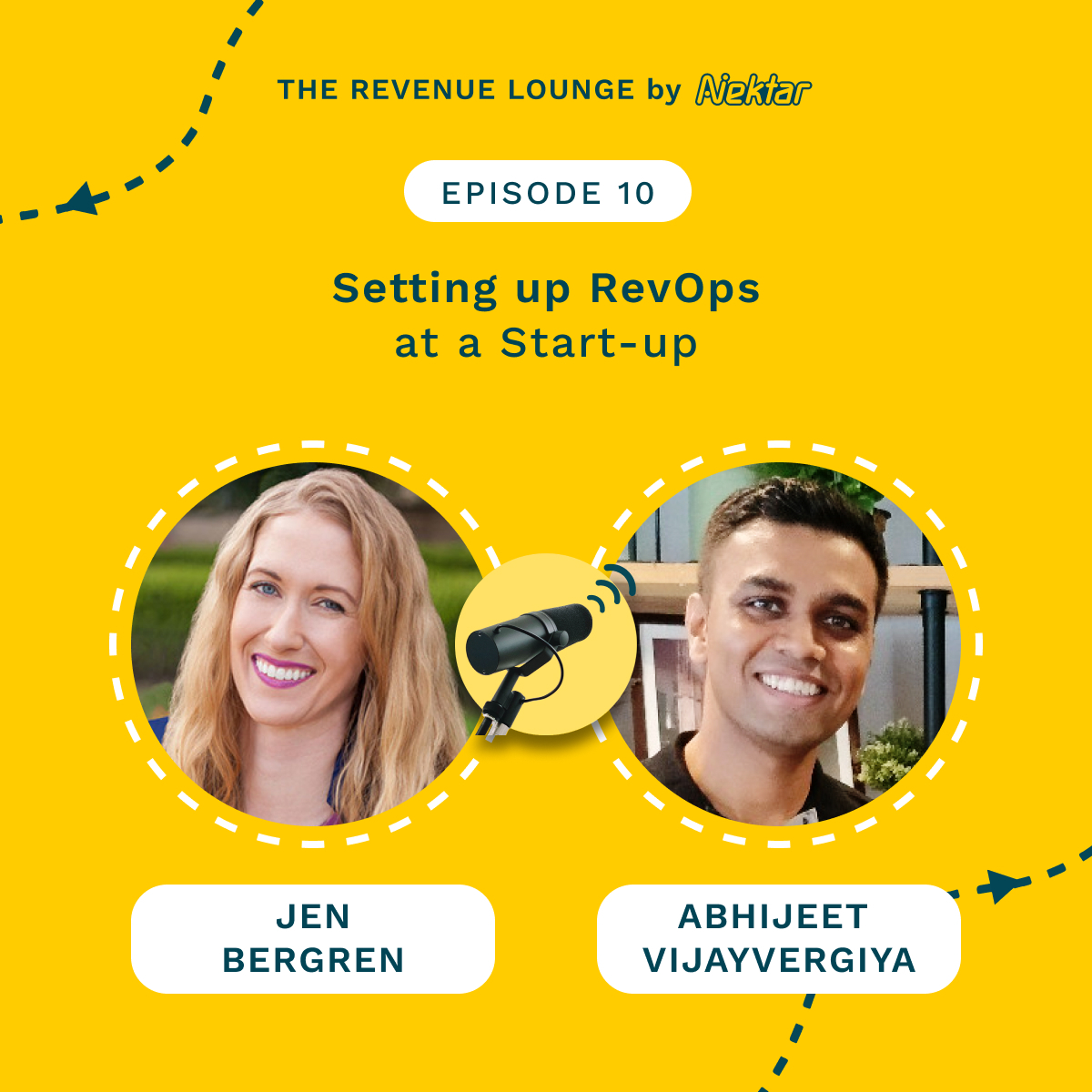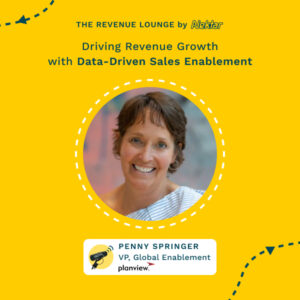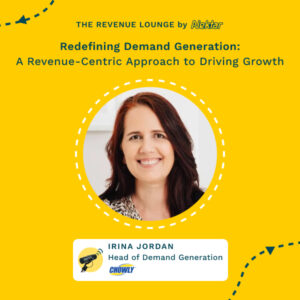Ep #9: Championing Data Hygiene With RevOps ft. Trent Allen
May 31, 2023
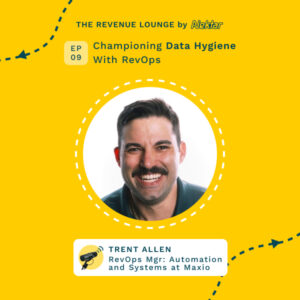
About
The Revenue Lounge
The podcast covers stories from leaders across RevOps, Sales, Customer Success, GTM, Data and Marketing about what drives these functions and what advice they would share with our listeners. With 3 seasons recorded, the podcast currently features 50+ enterprise leaders in the B2B SaaS domain. Tune in to hear from the best in the business
Welcome to Season 2 Episode 9 of The Revenue Lounge Podcast by Nektar.ai – A series of interviews with top Revenue Operations leaders on what drives the function and what keeps them going!
Episode Guest – Trent Allen
https://www.linkedin.com/in/
Episode Host – Jordan Zornes
https://www.linkedin.com/in/
Podcast Details:
Podcast page – https://nektar.ai/podcasts/
Spotify – https://open.spotify.com/show/
Google Podcasts – https://podcasts.google.com/u/
Apple Podcasts – https://podcasts.apple.com/in/
Episode Details:
The amount of data facing organizations today is overwhelming. Most of this data is siloed and trapped in multiple systems. Data trapped in disconnected systems does not help in creating a seamless experience across the customer journey.
RevOps can help with untangling this messy data web, and keep data clean and unified – so that the entire organization understands and looks at data the same way.
Our guest today is passionate about this topic and will help us understand some nuances around how RevOps can take a lead in making data work for organizations. Trent Allen is with us today, Trent is a RevOps manager at Maxio, a financial operations platform for B2B SaaS.
Want to learn more about Nektar? Talk to our team – https://bit.ly/3MishjZ
#datahygiene #datahygienebestpractices
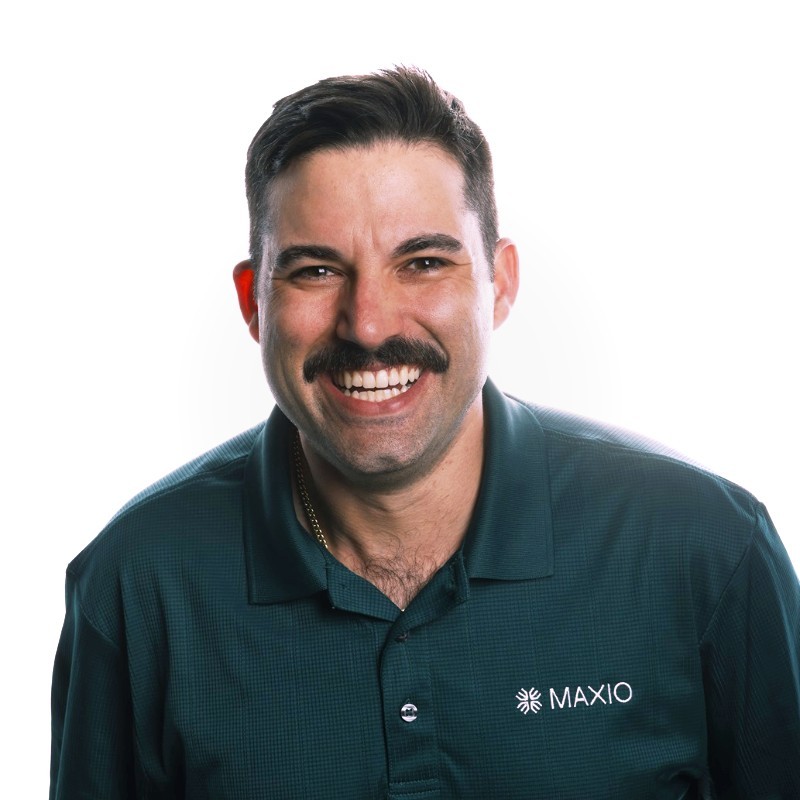
[00:00:00] Hello everyone. Welcome to this episode of the Revenue Lounge Podcast. In today’s episode, we are going to explore how RevOps can champion the cause of data hygiene. The amount of data facing organ organizations today is overwhelming, and most of this data is siloed and trapped in multiple systems.
[00:00:16] Data trapped and disconnected systems does not help in creating a seamless experience across your customer’s journey. And Revops can help with this untangling the messy web of data and keep data clean and unified so that the entire organization understands and looks at data in the same way. Our guest today is passionate about this topic and he will help us understand some of the nuances around how RevOps can take a lead in making data work for organizations.
[00:00:42] Today with us is Trent Allen. Trent is a Revops manager at Maxio, a financial operations platform for B2B SaaS. Trent, would you like to tell us a little bit about yourself?
Yeah, absolutely. Thanks for having me today, Jordan. I’m excited to be on the Revenue Lounge. I work at Maxio as a RevOps Manager, specifically focused on automations and systems.
[00:01:01] Kind of a Swiss Army knife for the team. More so I do Salesforce stuff. I kind of manage a bunch of the tools, as we all know. Any tech company has a litany of tools that they use for different go-to-market teams or even behind the scene teams. So just kind of making sure all those interact and talk great and pass data so that they can be actionable by all teams.
[00:01:24] I’ve been here for about three years, started as a BDR and found my sweet spot in operations and specifically revenue operations. Awesome. Moving from the field to the back office now, Trent, you’re counted as among the top revenue operations leaders in SaaS. Just wanted to thank you a lot for joining us today.
[00:01:41] I’m looking for this conversation. Hopefully we have some fun. So Swiss Army knife, that’s an interesting way to describe probably. Everything that you do, can you dive a little bit more into what got you into rev ops and where you want to go from there? Yeah, so, you know, I’m in my second career, I kind of feel like a lot [00:02:00] of people are gonna have multiple careers there in the lifeline, right?
[00:02:02] So for like the first 10 years of my life I did. Restaurant kind of work and operations there and ran, you know, companies like King of Pops in Atlanta, which was like a Popsicle killing, you know, Aiden. Aiden, our company, and said like, you know, a hundred people under me and drove efficiencies and operations there.
[00:02:18] And then things like Starbucks and Panera as well, and just kind of realized that wasn’t the path I wanted to do. So I was like, I wanna get into tech. I have friends in tech. So really started like figuring out how I wanted to do that. So I guess right around when I turned 30, 31, I finally made the jump, which is why I got into a BDR.
[00:02:34] Cause if you wanna get your foot in the door, sometimes you gotta start at the bottom right? And being a BDR taught me a lot about the tech industry, the tech space. Kind of how it works and, you know, learning how to pitch and you get some access to, to tools and you learn a little bit about, you know, maybe an outreach tool or a, a data scrubbing tool or Salesforce for your Salesforce shop, or a little bit about marketing, but you don’t go too deep.
[00:02:58] Your whole goal, obviously, [00:03:00] is get out there and make cold calls, you know, prospect, figure out what’s good for your company and your persona and. Though I was a decent BDR, it wasn’t the best. I was doing the most dials and getting the most conversations and definitely putting in like a lot of numbers on the board.
[00:03:16] But nothing was like translating when it came to closing deals. Not that was necessarily in my, you know, I didn’t control how the deal went cause I teed it up for a ae, but you know, it just wasn’t closing at the same rate that maybe other peoples were teeing up. So kind of got to this inflection point after about nine months and my boss was kinda like, We gotta figure something out or you’re gonna have to look somewhere else to go.
[00:03:38] And I said, well, I believe in this company. I’m not leaving. So I started talking to other teams and got really lucky and talked to our COO who had this idea of a project, and uh, he’s like, I don’t know if there’ll be a job after it, but we have this idea of this thing that we’re gonna call Prospect Journey.
[00:03:50] We wanna run through it. And so we did that and we saw some good results on it. But during that three month window, I learned from our [00:04:00] marketing operations guy a bunch about marketing operations. I. Got a leaned data certificate that taught me more of the backend architecture. I started getting more Salesforce knowledge and really starting to realize that.
[00:04:10] One, it’s a lot of fun because it’s critical thinking and problem solving, uh, which I absolutely love. It’s puzzles. No two days are alike, and you have a huge impact on the business that makes these teams. Jobs better, right? So they can focus on revenue generating tasks. So I really started diving down to that, and then our company announced an equal merger with another company.
[00:04:32] We were both about the same size and we had to make it work. So there’s a lot of experience and things that happened there about combining tools, getting data in the right spot, things like that, and just really. Realized that I found what I was passionate about, which is this idea of rev ops, and I hope to continue to grow in it and have my own team and either, you know, stay here at Maxo and do incredible things.
[00:04:50] But if that opportunity’s not there, you know, helping another company build up their rev ops and, and help make a lot of moves within that company. None. That’s a great path, and it’s always important. [00:05:00] I feel like BDRs and CSMs are some of the hardest customer facing rules, especially when you’re generating pipeline to be qualified and it’s going into somebody else’s hands to convert.
[00:05:11] And I’ve noticed this multiple times where BDRs will create pipeline or CSMs will create kind of upsell opportunities. Now, how would you define Rev ops as a whole? Yeah, so I think something that I missed a little bit in your last question was the idea of why I say Swiss army knife, which I think will be like I can go into a little bit more.
[00:05:31] So Rev ops to me, I think if you look and take a step back, people will say Rev Ops is operations that help go to market teams. So that would traditionally be marketing sales, cs, but I think more so rev ops is. A more defined area of operations. So for our company, we help finance and we help product, and we help hr.
[00:05:56] Like we end up touching all teams. And the idea is [00:06:00] if you start thinking that every team does have some aspect on revenue, you’re there to support them in their journey of doing that. So, Even when it comes to implementation or if it comes to obviously CSMs or, or sales or, or, you know, even a lot of times, you know, we know that demand gen is a big piece of it.
[00:06:17] A lot of times people think Rev ops and they think marketing ops and sales ops, or more so just sales ops. But for effective rev ops team, you need to be able to help all teams. I think a big part of that is making sure all the different tools and systems are connected and that the data that’s passing between them fluidly is there.
[00:06:33] So when. The person who’s using the, the end user of that tool is clicking around. They’re saving time because the data they need is in the tool that they’re working with. And so rev ops is there to plan, make like help with processes and building process paths and defining them and you know, writing those out.
[00:06:52] Some enablement, definitely kind of the keeper of truth for data when it comes to numbers and things like that. Dashboards make sure that people [00:07:00] have actionable data. And then helping them to find like the best process to do with that, while also just in general making things work better. That could be more automations in Salesforce or better automations and tools that people are using.
[00:07:12] So they’re getting the max use out of those tools so that your team is as efficient as possible. And the reason why I call myself a Swiss Army knife is our team. We have a marketing ops person. Who really supports marketing ops. We also have his Salesforce admin. We also have our guy that’s our BI guy and a few other roles, and I kind of sit between all of them, always supporting all like every one of those functions and really focused on making sure that what we keep alluding back to is that all these tools are connected so that again, people click things.
[00:07:44] It works for them how they need to, and the data’s there so they can be actual on it in a quicker time. That makes sense. And so you probably have a lot of conversations where maybe somebody who’s a subject matter expert, either within your team, the BI person or the Salesforce admin, let’s say you’re, you know, deploying a [00:08:00] new Salesforce workflow.
[00:08:01] And then kind of the end customer, a sales leader or the other GTM leader, you’re almost like a consultant or even maybe a sales rep, if you will, kind of consulting between these three or four language sets to deploy your product. Yeah, definitely. I think that’s a big part too, is because we help so many teams, we kind of know what all those hands are doing and we’re a good, uh, intermediary of like the projects that are happening within the company.
[00:08:28] Cause we have a pulse in them all. And like really helping stay focused on our companies OKRs or. You know, thing saying, okay, like that’s a great project, but this is kind of the bigger piece. Let’s focus here. And you’re constantly kind of shifting priorities and shifting resources to make sure that the main goal of the company is being fulfilled, but also fielding requests from those teams and being empathetic to the needs of that request.
[00:08:52] But asking the right questions of what’s the core of what they really need? Is it something not working right? Are they wanting this new thing? Cause I think it’ll solve something. And being [00:09:00] able to communicate with them. Really break it down, ask the right questions and create actionable steps so that it supports that team and possibly another team.
[00:09:07] So it’s not breaking any anybody else’s process or ultimately just saying, okay, well you have this problem, this team has this one. I bet if we build it like this, it solves both of that. It makes both teams more efficient. So like there’s a part of rev ops of communication and, and knowledge of how things are working that can bring teams together in a, a lot more agile and responsive way.
[00:09:29] I like how you threw Agile in there. I have a question here regarding disparate systems, processes, and technologies that can lead to disconnected data. I have a feeling how you might answer this, but how do you think we ended up, you know, here, and this is something that’s true across. All companies, anywhere, people and process adoption is a, you know, is an issue.
[00:09:48] Yeah, I would say there’s a lot of different reasons get us here, but I think ultimately, you know, teams work in silos a lot of the time and so they’re focused on their metrics and their goals [00:10:00] and I think that that drives people to make. Decisions and process makes or technology purchases or things like that that may not benefit the company as a greater, but benefits their team.
[00:10:13] And I think sometimes too, you’ll see that teams may do certain things that skew their own data. So that seems like maybe that team is being more successful when. I say, marketing says, well, we got all these leads, but then sales is like, yeah, but those leads aren’t actionable. Like that’s not any help. And they’re like, well, that’s not us.
[00:10:28] We are supposed to get leads. You know? So those kind of things. But I think some of the big things that are leading to the disconnect, especially in SaaS, but we know that each team has sets of tools that they want. If they have a problem, sometimes they want the shiniest new thing to try to fix that problem, whether it’s looking at the core of the problem, or at least looking at what they already have at their disposal.
[00:10:46] To see if that tool could solve it, cuz probably it could if it’s configured right, enabled correctly. So they’re gobbling up tools. There’s a lot of crossover on tools, and then those tools aren’t configured correctly. They’re not speaking it to your main database. So it’s creating disparate [00:11:00] information depending on who’s looking at it or how people are consuming that data.
[00:11:04] So, Yes, we have this data set, but then you need to have that standardization. How do we look at that? And I think each team may have a different way that they wanna look at that data to get the results or answers that they’re looking for to try to make actual decisions. And I think through the growth of multiple tools, and there’s so many great tools out there, not well defined or enabled processes in teams and then across teams, and then ultimately just any of that stuff not being connected in essential sorts of truth in a way that.
[00:11:33] Those teams know how to use that central source of truth, whether it’s that data or processes within that centralized part for that central source of truth. We’re talking about CRM a lot of times. Yeah, it’d be a crm. Awesome. And just one side question here. Do you have your own BI system or data lake that you do all the data science stuff out of?
[00:11:51] Or how do you consume data out of crm? So we don’t, per se, that I can think of have like, A data tool set, [00:12:00] and we do use like different things like a Keta or not Akita, but now it’s not gonna come to me. I know that there’s like, we have a sales one that kind of aggregates a lot of good information, but when it comes to like just general data, most of that is gonna be within Salesforce and then we have some great modelling within there.
[00:12:18] But if it’s like financial stuff, when you’re talking about like C and churn and all that stuff, Our product does that. So Maxo itself gives those insights and all that stuff while I was keeping up with subscriptions and all that stuff. So that kind of aspect is solved by our own product. That’s really cool.
[00:12:34] So where I’m going with this question is, you know, this is a pretty common challenge for Rev ops maintaining clean data and there’s, you know, garbage and garbage out. Is what we hear a lot. So when we’re talking about those tools to keep data clean, we’re really talking about the almost more of the input tools.
[00:12:53] Yeah, I think when you’re definitely trying to keep your data clean, there has to be some good data governance and I think, [00:13:00] you know, we’ll definitely can dive into that a little bit more, but you want to be careful about what you allow to be. Manually input in certain things because if that’s flowing into your center of truth, it could really have impact.
[00:13:14] I think something that we’ve done really well at our company and I understand that like. Hey, everyone kind of has their own different model, but our rev ops here is really special. We’ve become like a centralized pillar of truth for the company. We’re our own pillar. We affect all teams and we kind of hold a lot of keys, but part of our team, outside of our marketing ops, our Salesforce admin, myself or PI guy, we have a data governance person, like a data person that.
[00:13:36] Their whole goal is to make sure that data coming in and data connection within, you know, our CRM and everything is correct so that our teams have what they need. And I think that’s really important because when you have so many sources pushing in, they can be conflicting or could fail or something like that.
[00:13:52] And you always want, obviously the goal is to have the most up to date correct actionable data so that if you go to pull something, you can then [00:14:00] make choices based on that, not have to worry about that data. And so, yeah, I think one of your biggest challenges is all those different tools and all those different outside sources pushing in, and how do you control that and make sure that what is coming in is the most reliable.
[00:14:12] I’m gonna weave this into my next question. This is a yes. Now, is your data governance team, is that kind of the secret sauce for Max’s Rev ops success? I think it definitely helps a lot. I think when you have an extremely clean C rm, your team’s not worried so much about filtering through that information as it is, you know, whether it’s a customer or like, say if you’re a bdr, if you have good information within your C R m and they know that, then they can good, good reports, they can prospect easily through it and, but if you have a lot of bad leads and junk, that’s gonna slow everything down.
[00:14:46] Right. So, you know, it’s great if Demand Gen brought in 200 leads. But out of those 200 leads, if only 80 are in the icp and then persona, we don’t care about those one 20. What we’re caring about is quality lead gen. And so that’s [00:15:00] important to be able to like use that because that’s what the team’s gonna action on.
[00:15:03] They’re never gonna look at those other 60%, right? Because it’s no need for them to spend time on something we know won’t sell to them. So we wanna focus on that and I think that kind of information is what quite is super important. And that’s where they’ll go start to look for another tool or.
[00:15:17] Something that’s outside of the, so that’s a pretty complex conversation to have those. More tactical understanding of what’s happening in the CRM and you know, maybe some different data silos out in other tools. How does your data governance team, like how does that function? How do you make sure that data’s clean, but also have those business conversations?
[00:15:37] You probably don’t want to focus just on the data, you wanna focus on the workflows that, what is the flow and how do you run that team? So our data governments, I would say more so it’s like, We just kind of referred to it as data. They’re actually working on a new data. Governments like outline. But so think of our rev ops team as we all have challenge of being stewards of data.
[00:15:59] [00:16:00] So it’s not just that team or that individual worried about that data, the whole team. And the cycle is worried about making sure we have clean debt. I think any Rev ops team, that’s like first and foremost cuz you’re giving reports to people and you wanna make sure you, you know, those reports are correct.
[00:16:15] Cause then they’re gonna go onto either a board or take it to a ELT or something, a leadership team or something to make actual data. So what our. Data folks have done in the past and kind of what they do now is it can be little things like making sure that if something’s in your crm, the different tools you have connected to it.
[00:16:31] So in this case, let’s say LinkedIn, make sure that person’s connected to LinkedIn. Why is that important? Well, I see I, or ICP formula has certainly conditions that could score higher or lower based upon. Information we can pull out of a LinkedIn or pull out of something like ZoomInfo or Clear Bid or pull out of something like G2 or, or Crunchbase, like all that can kind of affect where that company’s ICP is.
[00:16:52] So we wanna make sure that we’re always having those items cleanly connected to the right contact, the right account, and [00:17:00] that the information that’s being stamped and actually recorded on those recorded objects. It’s correct with the up-to-date information, and so data team governance will kind of help with that.
[00:17:10] Other people on the team, like myself, you know, we have to make sure that if. Supports using Zendesk or a similar tool or our outreach tool is, you know, outreach or sales off what’s happening in there. That information’s passing in in the right way and then recorded the right way in the CR RM so that those team leads and things can see that information and do that.
[00:17:29] Right? And so a lot of times what our rev ops team, especially with data is. They’ll run reports to make sure data’s right. They’ll, they’ll do that. So our BI guys will definitely be looking into that, like how many of these reacted the way we expected them to. If not, why not? And then updating them to make sure that they are reflecting how it should be.
[00:17:48] And it takes a lot. But you know, I think we’re exceptionally challenged cuz we’re still pulling together two companies. And so there’s been different philosophies along the way and I think, you know, there could cause a little bit times where you’re doing more of that than, [00:18:00] than you would like. But it’s always good to have an eye on that because again, you don’t want to think you’re somewhere and then you get at the end of the quarter, realize that.
[00:18:06] Oh wow. We really weren’t doing that at all. So, yeah. And my next question was gonna be around data hygiene strategy. What are some of the ways you recommend keeping that clean across systems as it stands, the test of times? Are you still migrating to Salesforce instances or merging? We’re done with that.
[00:18:20] We finished that almost a year ago. So if we rewind a year ago, the world wasn’t a. Wildly different place than it is now. What are some of the strategies that may have worked, may have not worked? Things you would do differently to, you know, as you flow through a time where there’s tech layoffs and bank collapses and the interest rates increase.
[00:18:42] So everything that we’re, you know, kind of dealing with now, how do you navigate those waters where leaders will tend to, you know, try to adjust quickly on the fly? That might impact, you know, something that, Can be a little bit more sensitive, like data hygiene strategy. Wow, great question. I think where we’ve been [00:19:00] successful is over the course of the past couple of years, have really shown and built like trust around what Rev Ops does within our company and how we support the teams.
[00:19:09] And I think that what’s kind of helped with some of that knee jerking or quick decision response type movements is that along the way, if those decisions are being made, A Rev ops leader is involved in that conversation, and that’s important because it allows us to have insight on what they’re thinking, where they would like to go, but then allows us to.
[00:19:35] Iterate on how that could work. So we’re part of the process and I think that’s important. It’s not the case in a lot of places where the rev ops are part of those conversations and being brought in. It took us time to like build up that trust. But I would say that if there’s a big conversation like going on, you need someone in the room that that kind of knows the back end of how it works to see what’s possible and how we can make these changes without making too much impact to everybody else.
[00:19:59] And if you [00:20:00] don’t have that, that set up, I think that when someone’s ready to make that change, I think it’s understanding how to ask the right questions to that person even after it’s done, say, what is the end goal? And I think we talked about that a little bit more. Why are we making this decision?
[00:20:16] What’s your theory here? What are you basing off of? So we can help make those right decisions and support them in the best way that makes sense for the rest of the company. But I think everyone’s feeling the whole like, oh, well the economy’s down. So instead of working on like new sales, let’s focus on cross-selling or less sell.
[00:20:31] You know, work us on up sales or, or how do we keep retention? Or what can we do here or here? You know? And it’s definitely every team looking at their metrics they have to hit and trying to figure out a way to get there. And I think if there’s kind of like that team of calm that can field all that and hear it.
[00:20:46] Can help tweak things with them and say, Hey, well, if we tweak it this way, or we change this process this bit, maybe we can support this. Or, Hey, okay, you have this big project on up sales. What are some ways we can pull in marketing and sales to make sure that this helps the CS team? [00:21:00] We have this initiative.
[00:21:00] You know, and then focusing that priority on that, because yes, everyone can be working on a big priority, but ultimately it’s what that company’s goals are and being aligned with what the company goal is and what’s the biggest priority at that moment, and supporting those teams. And then focusing on the next one down the line, and then having that ability to let teams know, Hey, like we know this is our priority for you.
[00:21:21] We will be able to help you, but right now, this is the number one priority in the company. This is what we need to be focused on. As soon as this one’s solved out, we will definitely, you know, be able to help you iterate on this and do that better. And I think because you can’t make too many changes too fast when you do that, it causes a lot of problems.
[00:21:37] So I think that there’s some throttling there that’s necessary, but that’s kinda how we do it here. But I know that’s not always the case. For some teams, I’m sure everybody’s going through it right now. And one of our last conversations, you know, they had rolled out new territory planning and they’re middle of Q1 and they’re still in.
[00:21:57] Trying to roll out territory planning and people are not happy with their [00:22:00] territories for fiscal year 24. Is there a specific example you could kind of dive into over the last six months where you’ve had to run a fire drill and what the strategies were to implement that to make sure that either it impacted data you had to, you know, adjust data architecture or maintain that single source of truth that your team has created?
[00:22:20] Yeah, something that I guess a lot of teams would, and kind of piggyback off, like you’re saying, territory, so, Late Q4 leading into Q1 this year we did a realignment with B e R and AE and some of the marketing proc like process. So we’ve kind of always had our solutions consultants or account executives sell based upon revenue bands, right?
[00:22:43] So, you know, emerging or startup growth, strategic, those kind of areas, right? But in the past, our BDR team would just. They could go after anything and then through one of the tools we use, it lets them know who they need to assign it to. We use Chili Piper, we have like rules in there saying, okay, this company is a [00:23:00] size.
[00:23:00] It’ll be this pool of guys or gals that can be chosen for that meeting. But more so we shifted more recently into, no, and now we wanna segment the bdr. So they’re focusing on supporting these teams. So now we have startup growth and strategic within the BDR teams. Right? And then even still, we have marketing.
[00:23:19] That is focused on, okay, we’re gonna push this for the startup world. We’re gonna push this for growth stage companies, we’re gonna push this. So really aligning efforts to feed those different areas. Cuz we know we have different win rates and we know we have different times to deals closing and different cost of, you know what, we can garner revenue from those stages.
[00:23:36] And kind of pulling levers in different places to try to get sales goals and things better by all aligning on the segmentation. So that took a lot of like restructuring within our sales force like. You know, certain tools, like a good example is we we’re a lean data shop. So you know, it took a lot of restructuring of lean data and like having checks of saying, okay, if we have this lead come in from lead gen, First, is it a good lead?
[00:23:59] If it’s [00:24:00] a good lead, that’s great. Then we need to see like what territory, well, not necessarily territory. We do have some, so we have UK and Ireland, but outside of that, it’s pretty much open game, but then it’s done by that segmentation. So we had to build those segmentations out. We had to build those segment teams.
[00:24:13] We had to then create the tracking to make sure that we can verify that when leads are going to the people, that they’re from the right segment, going to the right person, and like having to make sure that all that structure was there for reporting. Actual insights and then like once we start gathering that right data, How can we tweak the process to make sure that those teams, those segments are being supported in the way they need to be supported.
[00:24:36] Awesome. So you have that project, you deploy, it sounds like, kind of q4, how is adoption going and you know, how are you handling that where you, maybe you have to work with the enablement team or keep product marketing and enablement or you know, other teams aligned around that new revenue band structure and, and segment.
[00:24:53] Yeah, so luckily our. Sales team has been focused kind of in [00:25:00] that segmentation for a while. What’s different is the BDR team and marketing kind of thinking more so that way versus just strategic and the non-strategic. But what’s helpful for us is our BDR team is actually part of the marketing team.
[00:25:12] They’re not a lot, they’re not under the sales team. So what helps in this effort is since they work on the marketing team and now they’re working in segments, there’s a good communication line from the marketing team of Okay. We need white papers or we need blog posts or something that speaks to this segment cuz they’re not getting enough leads and there’s good alignment there already because they’re part of that team.
[00:25:32] So that probably is what helps us there when making a change like this cuz it’s really, if you take a step back, that change was only impacting the marketing side of things. Cuz BDR is a part of that and that was the shift there. So the shift has been interesting. I think the biggest part has been just pulling the right kind of data to see, you know, what.
[00:25:51] Or how effective or even, so the closing rates of like some of these initiatives are, I think is super important in campaign attribution and [00:26:00] things like that. So that’s been more of the, the trial. And that was gonna be my kind of next question was how much of that move were you able to pull? Or, you know, did data inform versus maybe a new leader came in and said, Hey, this is the way we should structure the team.
[00:26:14] Maybe rephrase that. So as you’re deploying this new. GTM process. How much did data inform that, or how much have you been able to use data to go drive data-driven actionable results versus how much of it is, you know, going back to a leader’s gut instinct or past experience? Yeah, so in this case, it was based upon data that we were seeing.
[00:26:37] We were seeing kind of where we were seeing our most wins, where we saw the market performing. And kind of re-looking at how do you pitch to those different levels. And we see that data from how those deals have been won or lost when we’re in those sales cycles. So [00:27:00] the data was a big part of understanding how to segment them out, how to classify what we say is these different areas, and then being able to figure out like what the right ratio of how many people to put in those segments.
[00:27:12] And then, You know how to market against that and things like that. This brings us back to the top, and we’re moving into the kind of final rapid fire question area here, but your experience as a BDR who performed very well based off of BDR metrics, but. Getting, you know, the next person in line to consume that, make their conversions.
[00:27:30] That seems extremely valuable to have on a Rev ops team as you go and have those conversations and make data driven changes. Kudos to you and to Maxo. That’s a huge deliverable. That’s all right. So I have six rapid fire questions. We’re gonna go kind of off the data side here. What’s one book that you have loved in the recent past that you would recommend?
[00:27:50] So personal, just Finnish dune, but Frank Herbert. And if you’re into science fiction is an incredible journey. Funny enough to saw the [00:28:00] newest movie, and I’m glad I did because. It’s kinda like Game of Thrones. There’s a lot of characters, a lot of things you’ve never heard before and it helps you kind of like already see the world a little bit before you dive into the book.
[00:28:10] But the book’s incredible, very well written. If you’re thinking professional wise, measure what matters by John Doer. Super important. Talk about OKRs and actual items, things like that. And I definitely suggest that for anybody, especially when you’re thinking about great book, that’s great. It’s important to have those kind of personal creative space books and then to dive into, you know, something that’s popular in the Valley.
[00:28:34] So what’s your favorite part of working in rev ops? Every day is different. It’s a variety and it’s always kind of critical thinking and problem solving. And I think that’s one thing I didn’t like about being a bdr. There’s a lot of repetition. I like not quite knowing the challenges I’m gonna face each day.
[00:28:51] It keeps it fresh. So, and I think also because it’s always keeping fresh and everything, I think it allows you to have a massive impact on your fellow [00:29:00] coworkers day to day. If I can make their job a little bit easier, if I can take 2% off their plates so they can focus on what they need to a little bit more.
[00:29:08] That’s a huge win for me. That’s a great goal. I’m writing that take 2% off. I like that. Now, what’s your least favorite part of working in operations when things don’t work as you expect them to, and then you’re having to backtrack. I think it’s hard sometimes you have an idea how things should go and you implement them and maybe they don’t work so much so that.
[00:29:30] Or the constant re-enabling of teams.
[00:29:37] As a former enablement person, I apologize, that’s a hard one to master. Now, is there a rev op leader that you look up to, you know, personally as a mentor? Inspiration? Yeah. This guy, it’s kind of the reason why I got to where I am and we’re really good friends and he’s no longer working with us. He’s for Sunday Skies.
[00:29:53] His name’s Rob Walter. I wouldn’t say people would know him per se from his, you know, LinkedIn. He doesn’t have [00:30:00] a big persona. He does post, he does mentor people, started in marketing ops and was actually a news producer and then moved into tech and now he’s running his own rev ops. And, uh, he taught me a lot and took me under his wing and that’s great.
[00:30:12] And I always will shout him out. Great guy. And then if you’re looking for someone that people, you know, would, would consider good friends with, like Keith Jones and he’s now a gardener doing rev up stuff and. And Ben Fuller who does talks about biz ops and uh, James MacArthur, there’s a group of folks that we’re all pretty close within a community called Wizard of Ops, which is a SLAP community run by closely with Sonar.
[00:30:36] And there’s a lot of great people in that group, and Eric Grays and Sarah and just like there’s a tight group of us there, they all like pretty well known within the influence space and look up kind of to the mall and, you know, help each other with information all the time. So I think it’s gonna be diversified.
[00:30:49] I don’t have one solid person that I’m like, yes, this guy. This gal, they got it. But I think it’s a emulation, I think, uh, wizard of ops is, is if you’re ever looking for good advice and [00:31:00] things like that, that’s, I’d rather point you to a community of rev ops leaders than just one y You know, I got into Wizard of Ops last year and completely agree.
[00:31:07] It’s an incredible space. It’s unique in itself that, that people aren’t pitchy or selly. It’s straight up, Hey, I have this problem. Can you help me solve it? And they’re like, yeah, I ran in that problem too. Here’s how we solved it. And that’s really what rev op should be about. And the more we help each other, The better it is for the community.
[00:31:23] Rob sounds like a great inspiration. I coincidentally have my own Rob Walter from my time at Costco that I also look up to. Is there any advice maybe from Rob or Keith or Ben or Sarah, anybody that you’ve received that stayed with you that you’d like to share? Yeah, slow down, ask the right questions. Be empathetic.
[00:31:44] Uh, to be successful in rev ops, it’s. Consuming a lot of information that’s being passed to you from teams and then being able to articulate back in an understandable way about a new process or why something is or why it isn’t. And I think it’s [00:32:00] meeting that person at their needs and I think that’s something that’s really important.
[00:32:02] It’s just slow down, listen and then be empathetic. I love that, man. The last question here is one piece of advice you would give to people who’d like to have your job someday. Yeah, so we kind of outlined before how I kind of got into it, but I wouldn’t have been successful if I wasn’t hungry. And what I mean by that is, You know, I had someone that believed in me, which is key.
[00:32:21] You should definitely find someone that believed in you and can be your champion. But don’t be afraid to ask, like, Hey, I wanna be a part of that project. Or, Hey, can I sit in on that meeting and hear what’s being said? Like, you know, like, oh, can I take this aspect of this project? And then if you get a yes, then you know, make sure you deliver on it so that the next time you ask.
[00:32:40] If you can get more, you know, the, one of the best things I did was during that first period is I took the initiative to go out and get leaned outta certified. And the reason why that was important is we already had lean data, but our COO was running it. And so we didn’t have a lot of time to do that. So it’s perfect for me to go learn, prove that I could take over it, and then get the reins given to me of that [00:33:00] tool, which is so integral in our rev ops org.
[00:33:02] And then adding on little things along the way and getting more trainings and just again, ask, so it’s. Be hungry, but be delivering on what you’re hungry about. Prove to people that you say you can do it. You can do and own mistakes. If you’re an ops, you’re gonna break thing probably more often than you think you are.
[00:33:17] Don’t be scared of breaking. It’s kind of like in life, don’t be scared of failing. It’s just how do you pick yourself back up to get better the next time? Yep. I have a big box written around, a point you made about maybe 20 minutes ago, building trust. Trent, this has been great. Really appreciate your time.
[00:33:31] I hope anybody listening goes and joins or wizard of ops if you’re not already there. Yeah. Thanks for having me. This has been a lot of fun. Thank you.

Ep #1: Navigating the Downturn with a Hyperfocus on Productivity
Listen Now
Ep #2: How to Win in Times of Uncertainty
Listen Now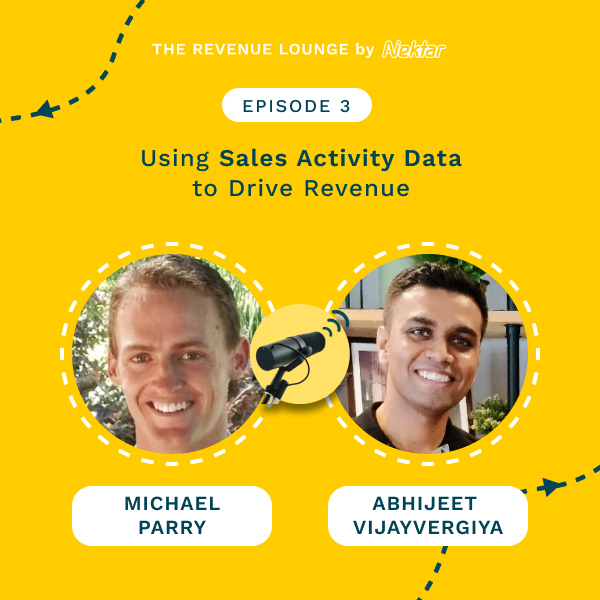
Ep #3: Using Activity Data to Drive Sales Productivity
Listen Now
Ep #4: Creating a Successful RevOps Roadmap
Listen Now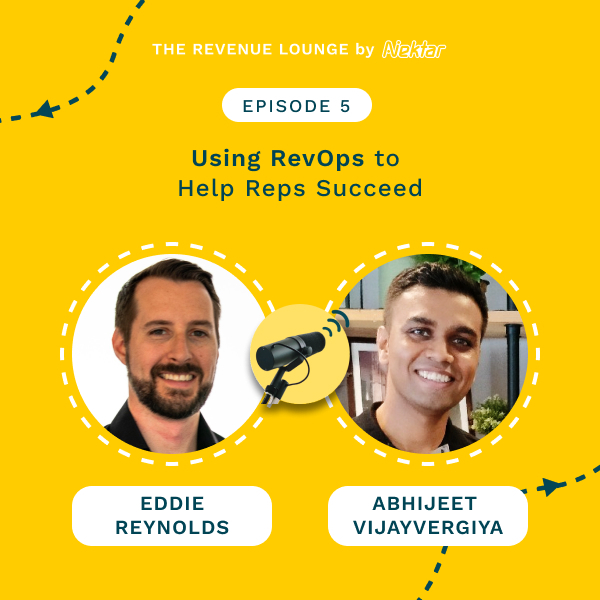
Ep #5: Using RevOps to Help Reps Succeed
Listen Now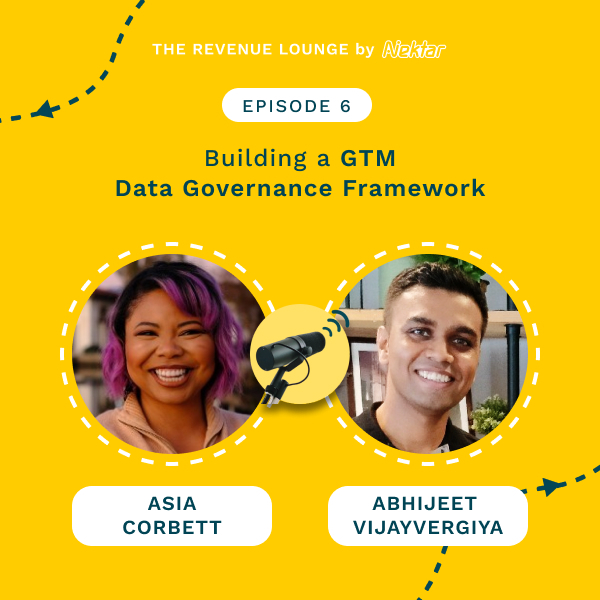
Ep #6: Building a GTM Data Governance Framework
Listen Now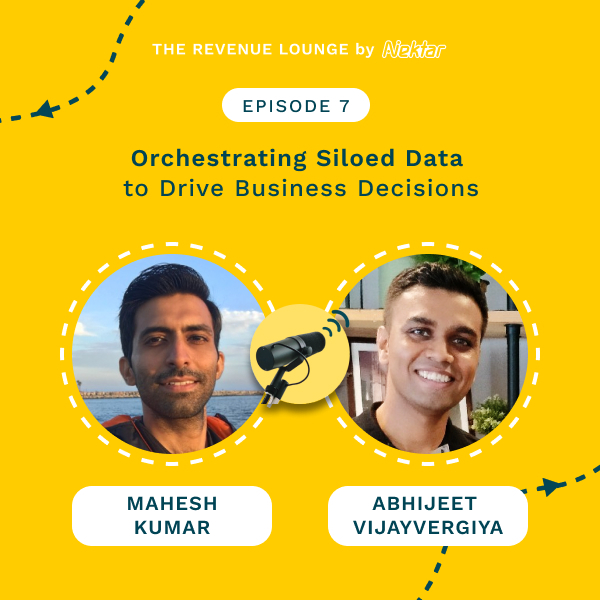
Ep #7: Orchestrating Siloed Data to Drive Business Decisions
Listen Now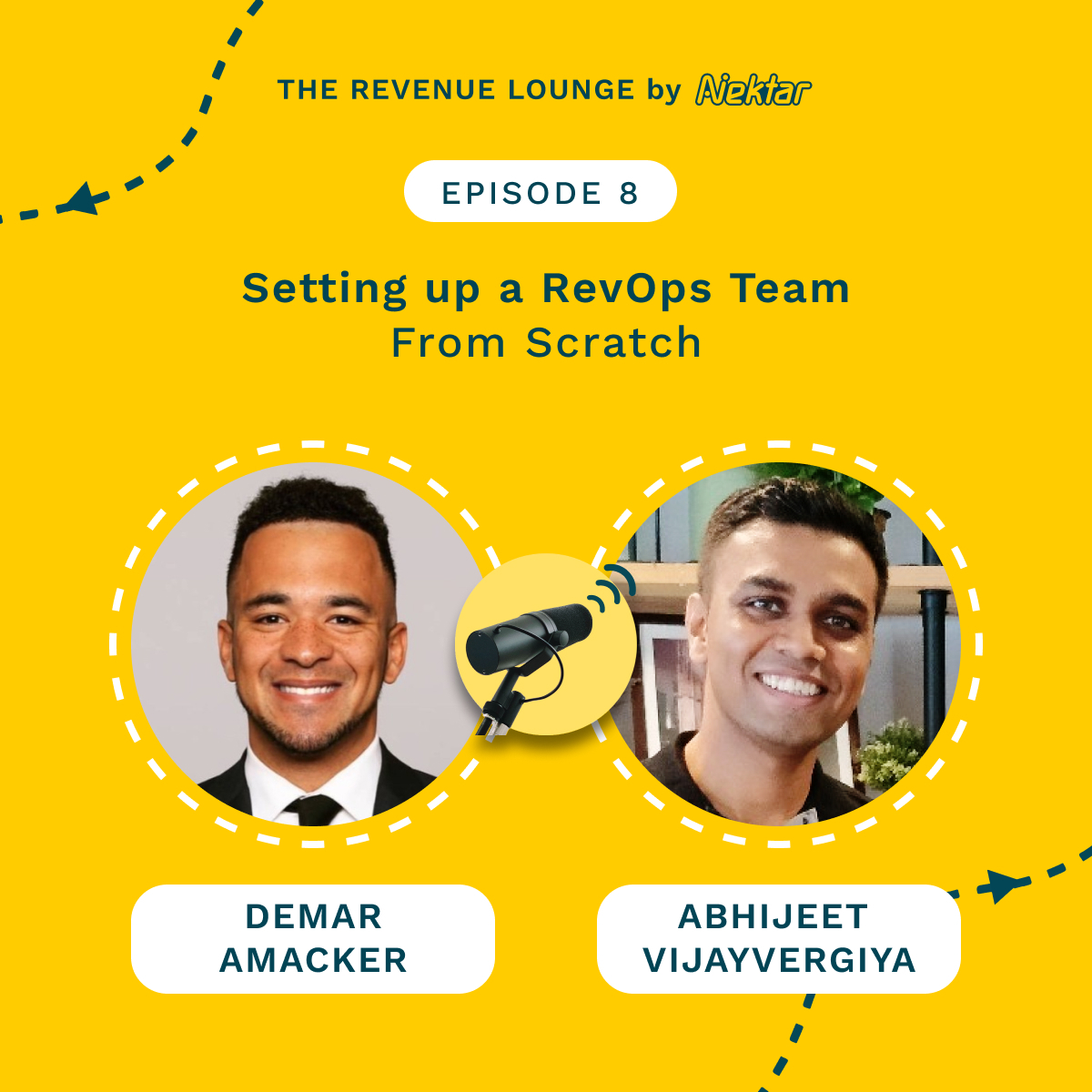
Ep #8: Setting Up a RevOps Team From Scratch
Listen Now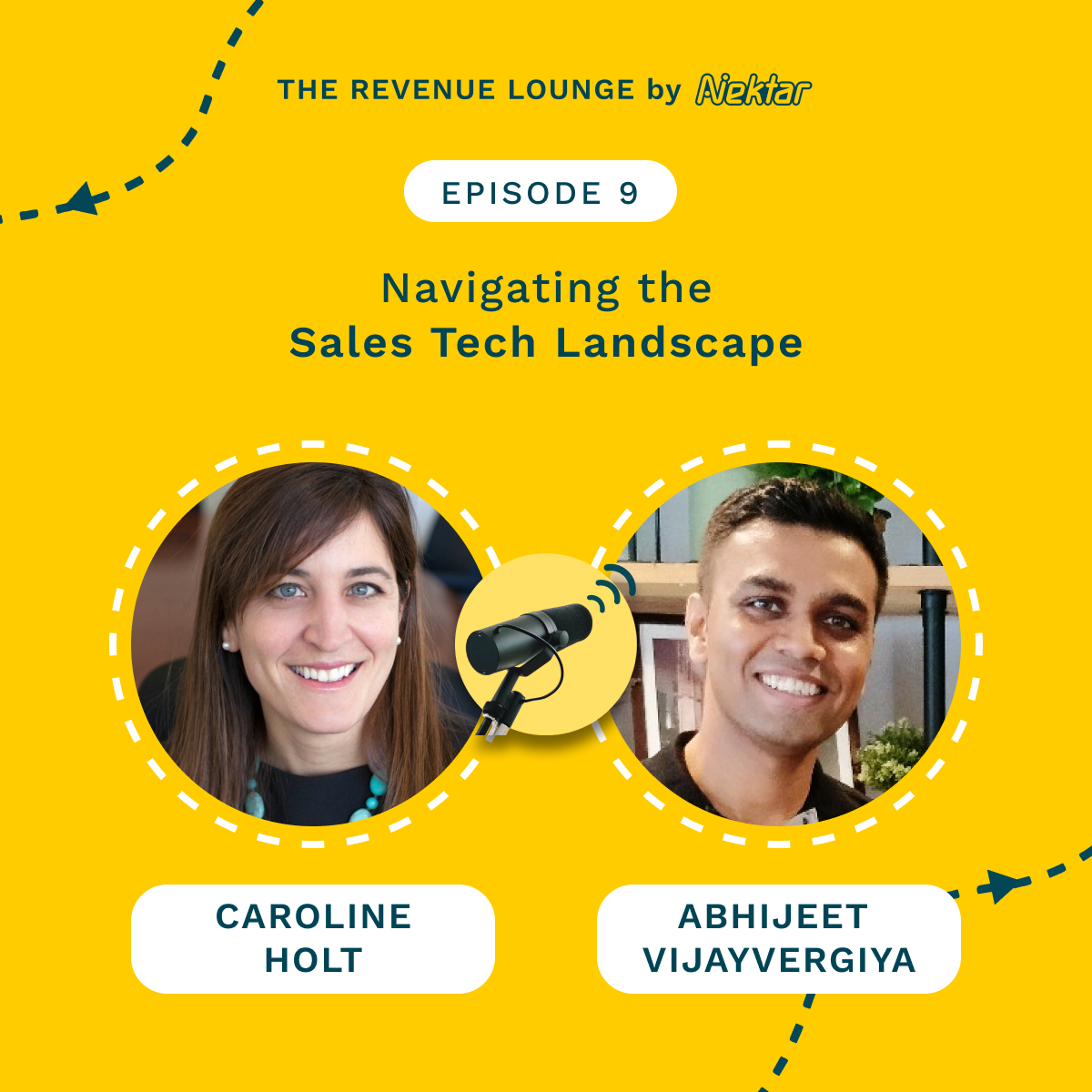
Ep #9: Navigating the Sales Tech Landscape
Listen Now